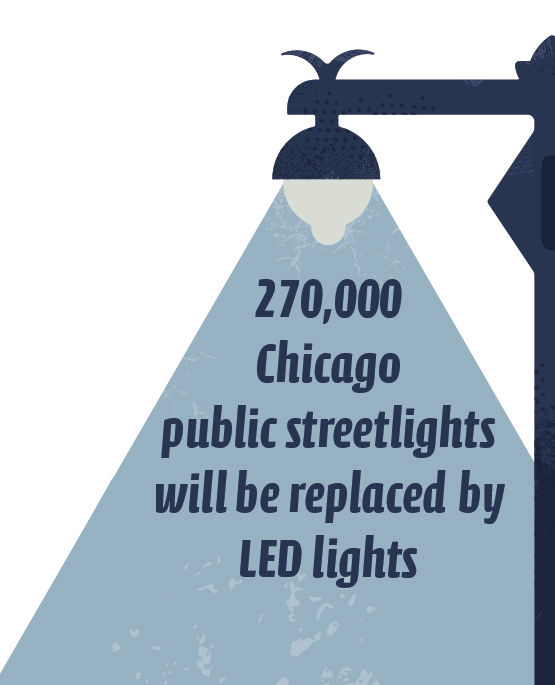Chicago rolls out new state-of-the-art lighting system
October 2, 2017
Chicago will shine brighter and see a different nighttime skyline due to the historic citywide streetlight initiative
Mayor Rahm Emanuel announced plans Sept. 19 to replace 270,000 streetlights with more energy efficient LED lightbulbs over the next four years.
The new lights’ energy efficiency is expected to save enough money to cover the $160 million purchase and installation costs, according to a Sept. 19 mayoral press release.
Currently, Chicago streetlights use high-pressure sodium lights, but LED bulbs use 50–70 percent less energy. The city also will replace worn-down light posts and add a new management system to increase the life of the city’s lighting infrastructure. The entire project—and the new management system—should be operational by spring 2018.
“The Chicago Smart Lighting Program will deliver modern, reliable, energy-efficient lighting that will improve quality of life in every neighborhood and fix one of the top reasons people call 311,” Emanuel said in the press release.
The project was launched Sept. 19 in the 8th Ward’s South Shore neighborhood. The lights will first be installed in neighborhoods with high safety concerns because they can act as crime deterrents in limited light areas, according to the press release.
“A lot of the underserved communities are far behind in terms of the infrastructure and improvements,” said Tonya Trice, executive director of the South Shore Chamber Inc., which serves the 5th, 7th and 8th wards. “Anything we can do to improve the lighting will definitely be a benefit and a deterrent of crime.”
Burnside—about four miles south of South Shore—ranks third in the city for quality-of-life crimes committed per thousand people in the last 30 days and is second in violent crimes, behind West Garfield Park, according to a report done by Chicago’s crime dataset portal.
Safona Calderon, secretary of Concerned Citizens of Burnside who lives in the neighborhood, said she is happy to have the new lights because Burnsides’s dimly lit streets create a negative environment for crime to occur.
“Whether it’s gangs, drugs, or prostitution. People tend to go to dark areas to commit their crimes,” Calderon said.
However, others remain skeptical. Michael Tidmore, program coordinator for Youth Services and Public Safety at Teamwork Englewood, said the $160 million should be spent helping other underserved areas of the city in a different way.
That money should be spent on something other than technological advances, he said, adding,“I think [investing in human capital is] the best solution to our violence [problem].”
Earlier this year Chicago rolled out sweeping security changes with increased surveillance around the city in hopes of reducing crime, according to a Jan. 27 press release.
The city of Chicago needs this project to help communities reduce crime, Calderon said, adding, “Not one [preventative measure] is going to work by itself.”








